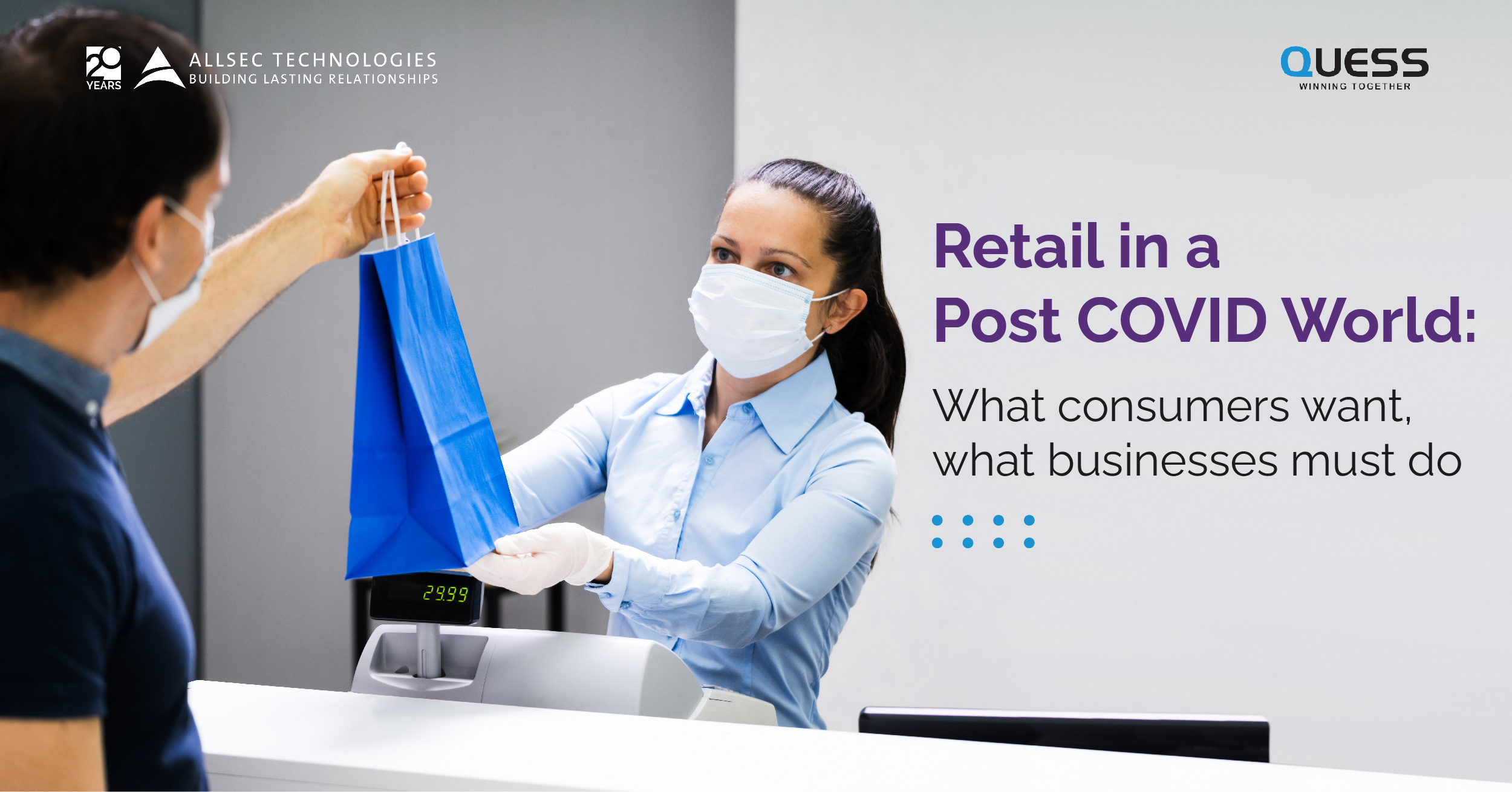
Retail in a Post COVID World
The COVID-19 induced disruption in retail operations has the potential to change the industry forever. And while changes in buying behavior and technology are not new in retail, the emerging trends are unique. A hybrid retail ecosystem seems to be the next big thing.
Customer experience, operations, seller engagement, and product management are likely to transform into a hybrid bubble that favors personalization over everything else. 79% of consumers indicate that they plan to continue shopping online as it offers easy customization of products. However, 52% of customers say they will continue preferring the proactiveness of a live agent.
Companies will need to continue to focus their efforts and investments on the online and remote customer lifecycle, with key improvements in digitization, customer service outsourcing, and tech infrastructure to cater to stay relevant.
Key Changes Expected
Contactless shopping
Even with brick-and-mortar stores opening their doors, consumers are likely to continue shopping through apps. By 2022, the online retail industry is predicted to jump from $4.8 trillion to $5.4 trillion in revenue. Factors driving the widespread adoption include safety concerns, faster checkout times, and convenience to buy from multiple retailers selling the same product. Sellers and vendors also seem happy with the trend, as it promises reduced operating costs and easier inventory management.
For offline stores, mapping out a contactless shopping experience is necessary to stay in business. Many retailers are now offering customers the option to place orders online and pick up the items in-store. Consequently, curbside pickup areas and drive-throughs are becoming more commonplace.
The use of contactless credit cards and digital wallets has also increased. With consumers expressing anxiety over exchanging cash and touching keypads, cashless transactions are likely to continue being a primary choice of payment even post-pandemic. This means that retailers and sellers must upgrade their existing payment infrastructure to be able to receive payment across different platforms.
Stronger Self-service and Autonomous Models
Minimizing human interaction and touch can be taken a step further with self-checkout systems. Many retailers, like Target and Walmart, already had these facilities in place pre-pandemic, but not many shoppers seemed willing to scan their items and bag their purchases.
But in a post-COVID world, this technology has gained traction. The success of Amazon Go and Amazon Fresh stores stands testament. These physical Amazon stores allow consumers to pick up items and leave. Payment for the items is completed later through their app, negating the need for human interaction or contact. More stores are likely to follow suit.
Hyper-relevance Will Be Crucial
In a post-COVID world, meeting expectations will not be enough. Retailers will need to know what consumers and partner sellers want before an interaction. Ensuring hyper-relevance at every touchpoint is a must. Flexible customer journeys that adapt to demands in real-time will be crucial to making hyper-relevance a reality.
Scaling new-age business models rapidly
As technology becomes increasingly interwoven with commerce, brands will need to drive change and growth quickly in highly competitive markets. To match this rate of change, several companies are onboarding different call center outsourcing companies, financial management partners, and digital solution providers.
At Allsec, we offer a range of business solutions to support retail transformation across all verticals. We can help cater to the complete customer lifecycle and ensure your business is ready for the new normal. To know more, reach out to us.


